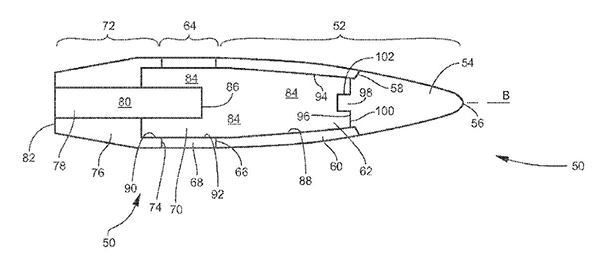The three engineers, Brian Kim, Mark Minisi, and Stephen McFarlane, were awarded a patent for the projectile and the trio developed the bullet in a bid to reduce the “collateral damage” – a fancy phrase used to describe innocent people being killed as the result of an armed confrontation. In other words, in order to kill as few people and destroy as little property as possible during a battle or other operations, the US Army designed a bullet that actually does not destroy itself, but has a special coating on it that dissolves from friction, ignition, and which later melts the bullet into something incapable of continuous flight if it doesn’t hit a target at a certain distance. The Army representative explained that the projectile would be filled with a flammable material that would ignite when the bullet is fired. As it burns, it would react with another material inside the bullet, which would cause the bullet to lose shape and become “aerodynamically unstable”. In other words, it would fall to the ground. By changing the composition of materials, it would be easy to tune the bullet to lose its shape at specific distances. This means that the Army has come up with a bullet which can self-destruct over certain distances, that distance being predetermined by the type of coating being used.
In one concept, the projectile is rendered unstable by the melting of the copper jacket, which produces a highly irregular shape. In another, the projectile is rendered unstable by the separation of the cylindrical portion from the base portion and the separation of penetrator from the projectile assembly. The system was developed using computer models and simulations based on the .50 caliber M33 and the .50 caliber M8 rounds. The basic design was then refined so that the ballistics of the modified projectile would match or exceed the standard round out to the maximum effective range. Though the system was developed for the .50 caliber, the inventors say that it could be used on any projectile from 5.56 mm to 155 mm.
“The biggest advantage is reduced risk of collateral damage,” says McFarlane. “In today’s urban environments others could become significantly hurt or killed, especially by a round the size of a .50 caliber, if it goes too far.” The bullet is in pre-development right now, which means that at this time it is nothing more than a “proof of concept.” In other words, the inventors have got it right enough times for them to be assured that it might be able to be manufactured at some time in the future. However, the Army researchers who are working on this project believe that they need to come up with something that will “lessen the impact” of being on or around a battle zone during combat for non-participants. This would allow the Army and other American military forces to fight in urban and other crowded areas without endangering the occupants of such areas. However, since the project lacks funding, it is unlikely that this “proof of concept” will appear on battlefields anytime soon. The bullet is not the only thing US army wants to disappear into thin air. The Defense Advanced Research Projects Agency’s (DARPA) ICARUS project has been able to produce such equipment for drones that can vanish into thin air. This way, the equipment would be of no use, even if it is captured by enemies.
